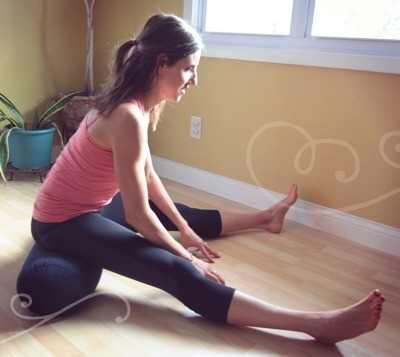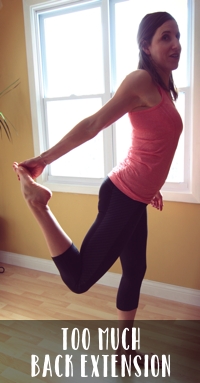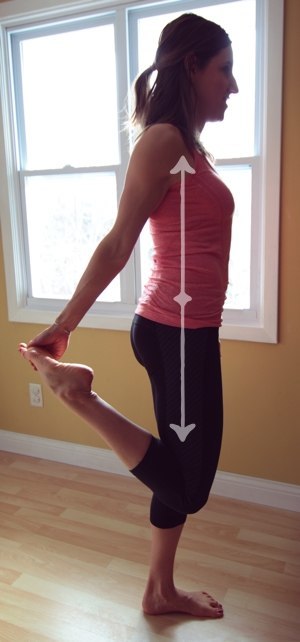The Cause of Low Back Pain
Back pain is the result of too much movement in the spine relative to the surrounding areas. It can be from too much flexion (forward bending), too much extension (backward bending), or too much rotation during our everyday lives. Yoga can decrease your back pain if you learn to perform the poses in a way that promotes stability of the spine. Doing the poses the wrong way can contribute to hypermobility and pain.
Too much back flexion
You can tell that this person has tended to overuse his lower back to bend forward instead of hinging at the hips. As a result, when he tries to stretch his hamstrings, only his back bends. Performed this way, the pose perpetuates his problem of too much back flexion.

His back is more flexible than his hips, and if he continues to perform the stretch this way, his hamstrings will never get any longer, and his back will continue to get more flexible. The vertebral segments that are moving the most become hypermobile relative to the stiff hips. His back pain will likely increase.

This is the modification he should do. When the pelvis is elevated, he can practice bending into the hips. If the hips are too tight for this, he could add a knee bend. The important thing is that the flexion happens at the hips and not in the back.
Now, the great thing about this pose: if you are doing it correctly, it can be used to promote trunk *stability *at the same time you are gaining hamstring flexibility. Keeping the back straight and stable requires that you turn on your abdominals. Now the pose becomes protective against back hypermobility, and pain should decrease.
Too much back extension
Long-time yoga practitioners are more likely to experience hypermobility in the opposite direction. If you look closely, you can see that my back is too flexible into back extension, especially in the upper lumbar spine. If I bring by leg back without being mindful of this, my back arches too much at that spot.

My back is more flexible than my hip flexors, so it arches before the hip flexors stretch. If I were to continue practicing the pose this way, my back (especially at that upper lumbar area) would get more and more flexible, while my hip flexors stayed tight. My back at that area of hypermobility would start to hurt.
Mindfulness
This is where mindfulness comes in. If we are more mindful of where we are feeling the stretches, we can balance ourselves out. This is why yoga can be so much more effective than just plain stretching.

This pose can be modified by pulling in with the abdominals and contracting the gluts on the same side of the leg that is stretching. This will control the trunk movement by keeping the back flat. This modification requires a higher degree of mindfulness, but increases stability and decreases pain in the back.


Comments